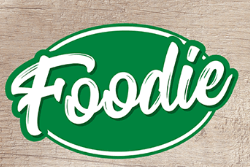✅ How to do it:
Use hot water (as hot as you can handle)
Scrub with dish soap and a scrub brush (not a sponge — they harbor bacteria)
Focus on grooves and stained areas
Rinse and air dry upright to prevent moisture buildup
🔁 Do this after every use — especially after raw meat.
2. Vinegar and Water Spray – The Odor Killer
White vinegar is a natural disinfectant and deodorizer.
✅ How to do it:
Mix equal parts white vinegar and water in a spray bottle
After washing, spray the board and let sit for 2–3 minutes
Rinse with hot water
💡 Bonus: It neutralizes onion, garlic, and fish smells like magic.
3. Hydrogen Peroxide + Baking Soda Paste – The Deep Cleaner
For stubborn stains and deep-down grime, this combo lifts the gunk like nothing else.
✅ How to do it:
Mix 1 part hydrogen peroxide with 1 part baking soda to form a paste
Spread over the board, especially in grooves
Let sit for 5–10 minutes
Scrub with a brush, then rinse thoroughly
This is your go-to when the board “has seen things.”
4. Lemon and Salt – The DIY Power Duo
This isn’t just for Instagram — it actually works.
✅ How to do it:
Sprinkle coarse salt over the board
Cut a lemon in half and use it like a sponge
Scrub in circles — the acid and abrasion clean and deodorize
Rinse well
🍋 Bonus: It leaves your kitchen smelling like a fresh salad.
5. Tea Tree Oil Spray – The Natural Disinfectant
Tea tree oil has natural antimicrobial properties — and it smells amazing.
✅ How to do it:
Mix 1 teaspoon tea tree oil with 1 cup water in a spray bottle
Spray after washing and let air dry (don’t rinse)
Store in a cool, dark place
⚠️ Note: Tea tree oil is toxic to pets — keep away from curious dogs and cats.
🧼 When to Sanitize – And When to Replace
✅ Sanitize After:
Raw meat, poultry, or fish
Eggs
Any messy, sticky, or slimy ingredients
🚫 Replace Your Board When:
Deep grooves won’t come clean
It’s warped or cracked
Stains won’t lift
It starts to smell even after cleaning
Plastic boards don’t last forever.
When in doubt — toss it .
🍽️ Pro Tips for Keeping Your Board Safe & Long-Lasting
Use separate boards
One for raw meat, one for veggies, one for bread
Wash immediately
Don’t let food sit and stain
Air dry upright
Prevents moisture and bacteria growth
Check dishwasher safety
Some plastic boards warp or crack in high heat
Never use bleach on porous boards
Can seep in and linger — use only on non-porous surfaces
Also, consider color-coding your boards:
Red = raw meat
Green = veggies
Blue = fish
Yellow = poultry
It’s a pro move that prevents cross-contamination.
🧠 Final Thoughts: Sometimes the Most Important Tool in Your Kitchen Is the One You’re Not Cleaning
We obsess over knives.
We upgrade our pans.
We buy fancy oils.
But we forget the surface where it all happens.
Your cutting board isn’t just a stage for chopping — it’s a food safety checkpoint .
And if it’s not clean?
Everything you make could be at risk.
So next time you finish cooking…
Don’t just rinse and go.
Scrub.
Sanitize.
Air dry.
Because sometimes, the difference between a safe meal and a sick stomach…
Isn’t in the ingredients.
It’s in the board.
And once you start cleaning it right?
You’ll never look at it the same way again.

